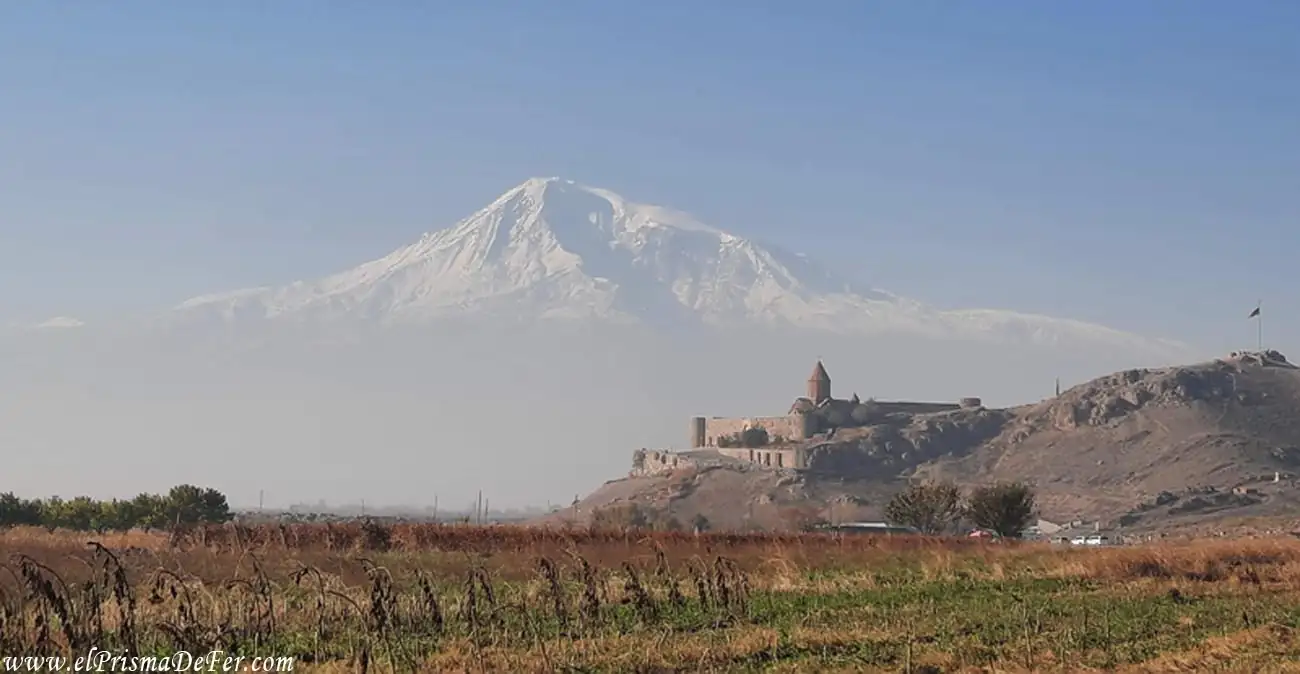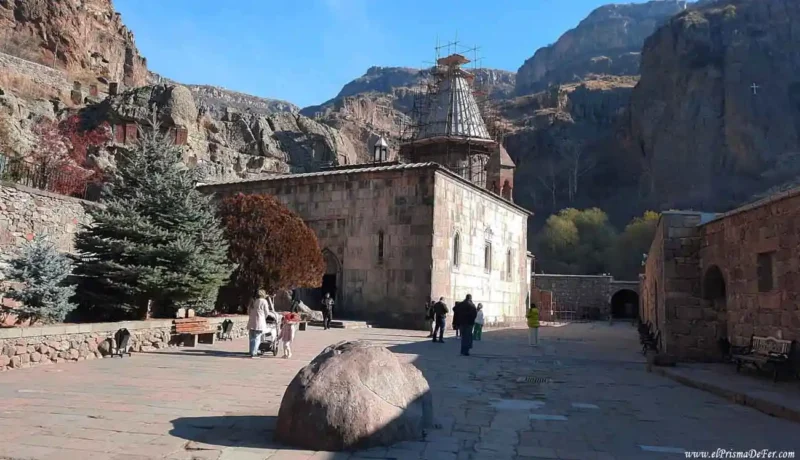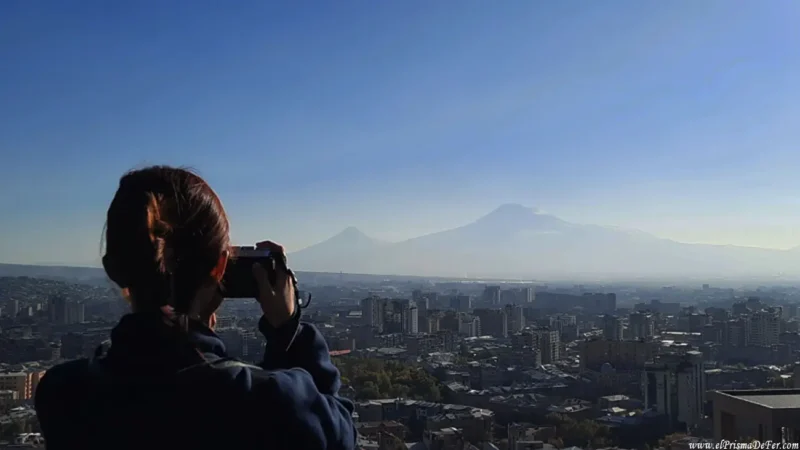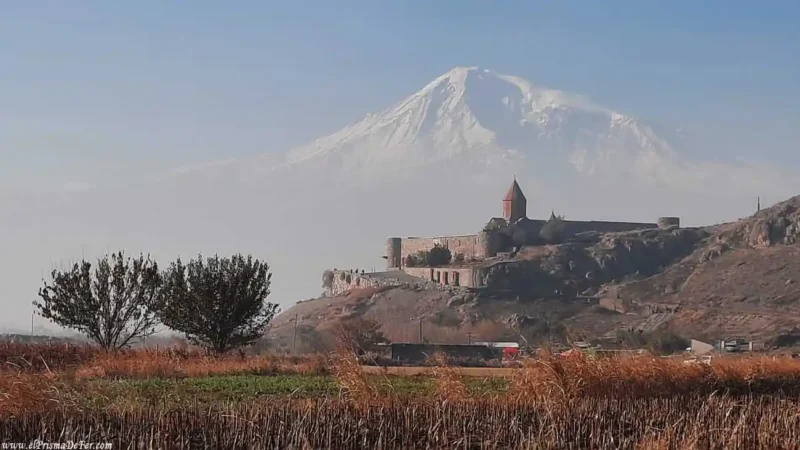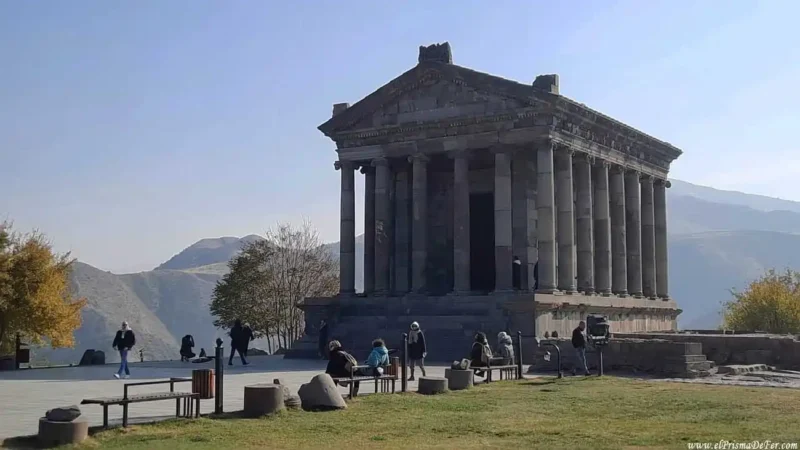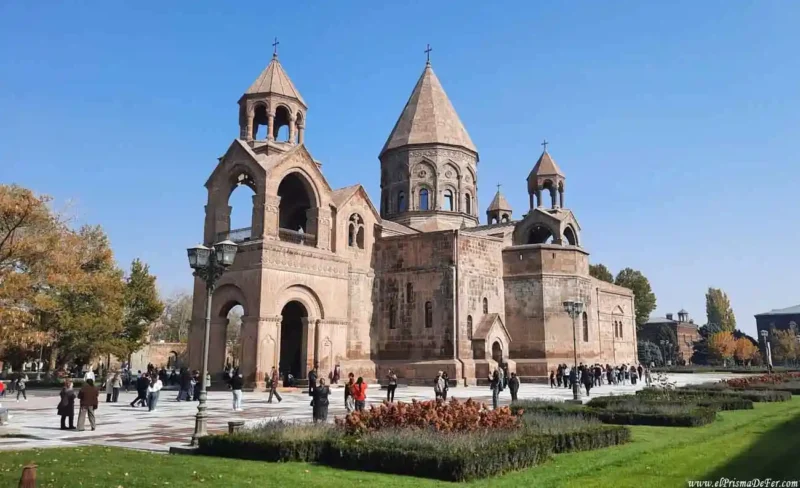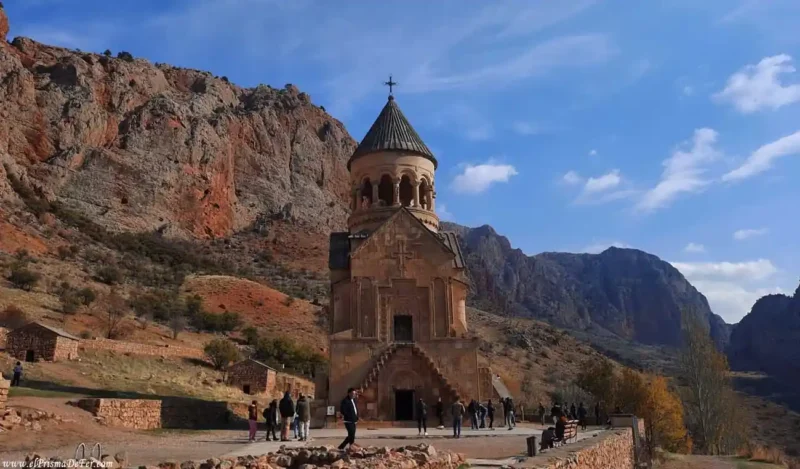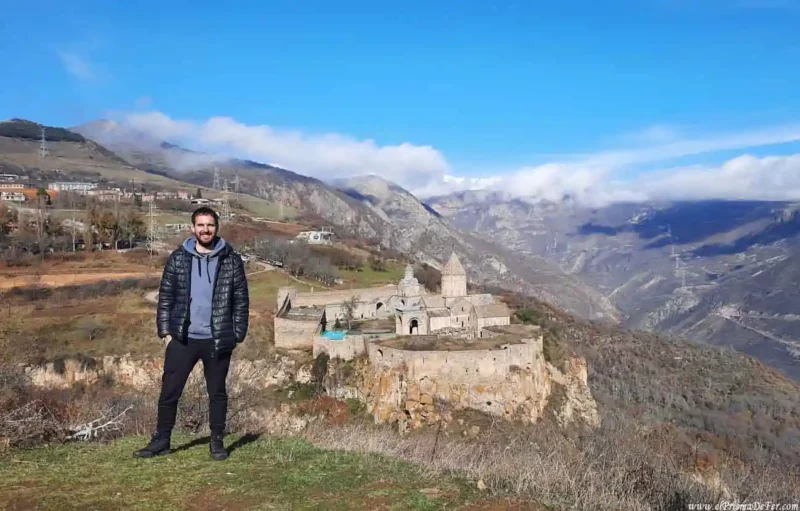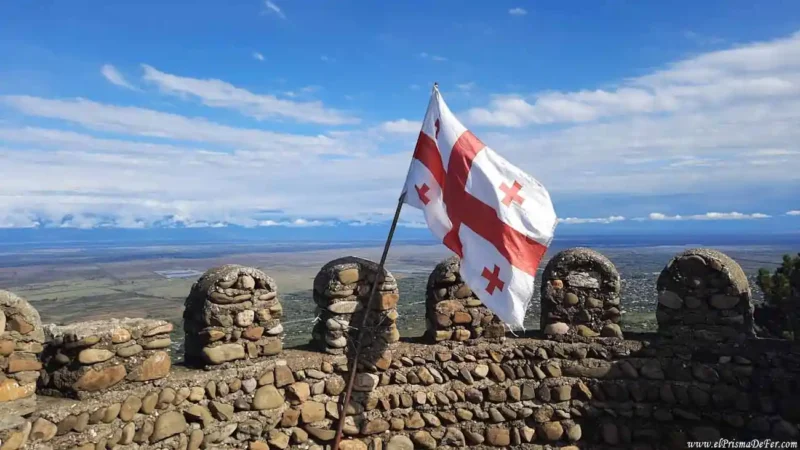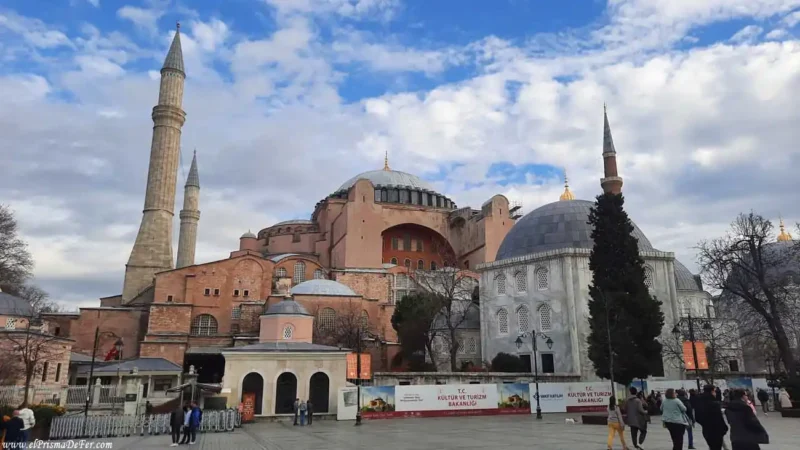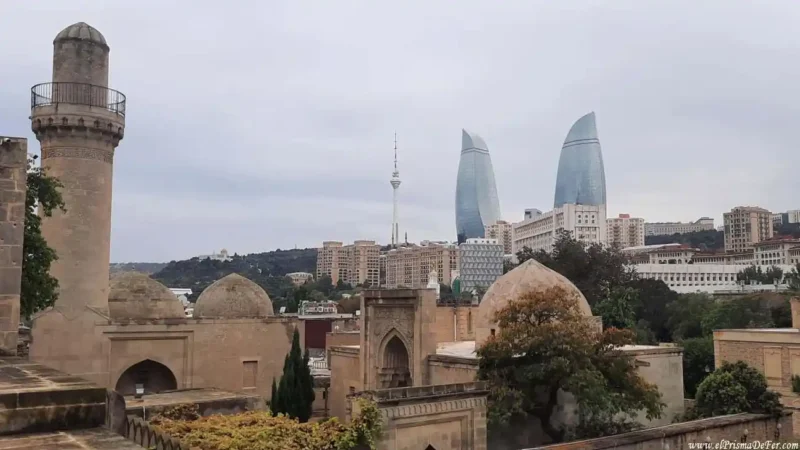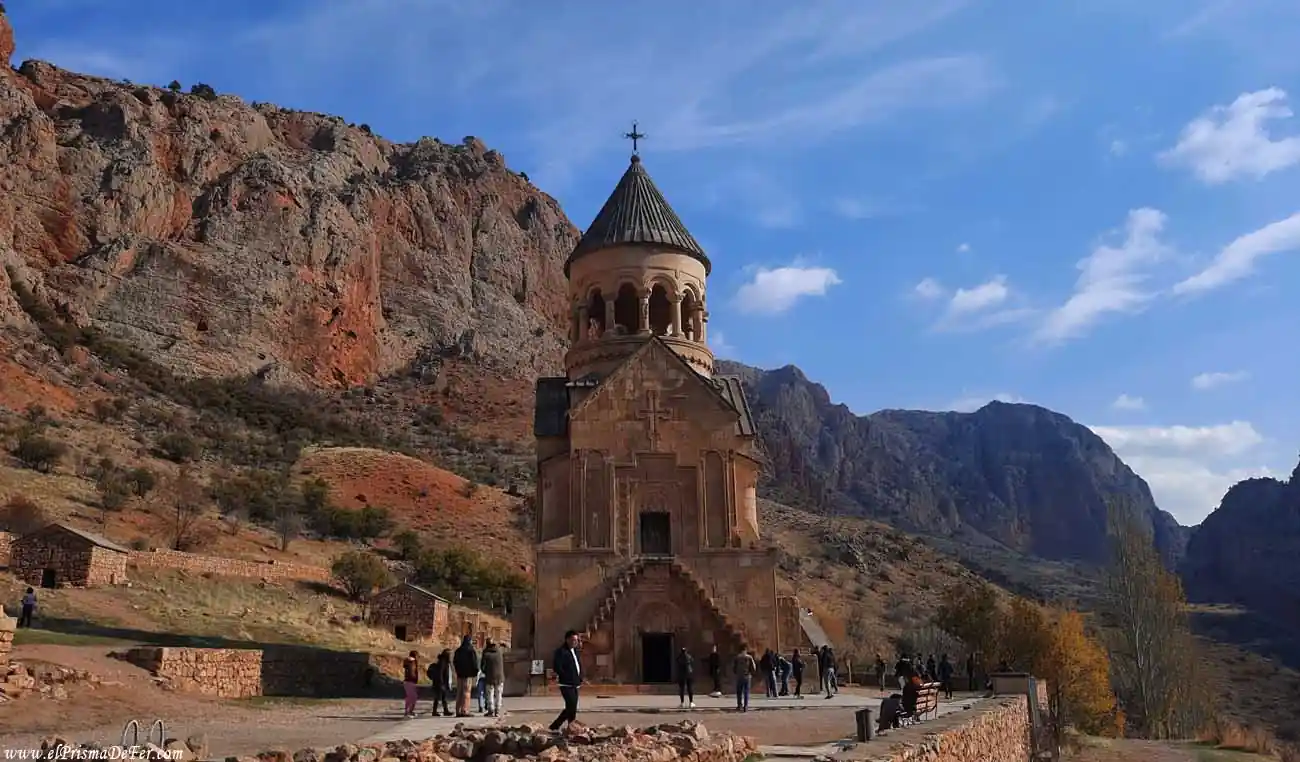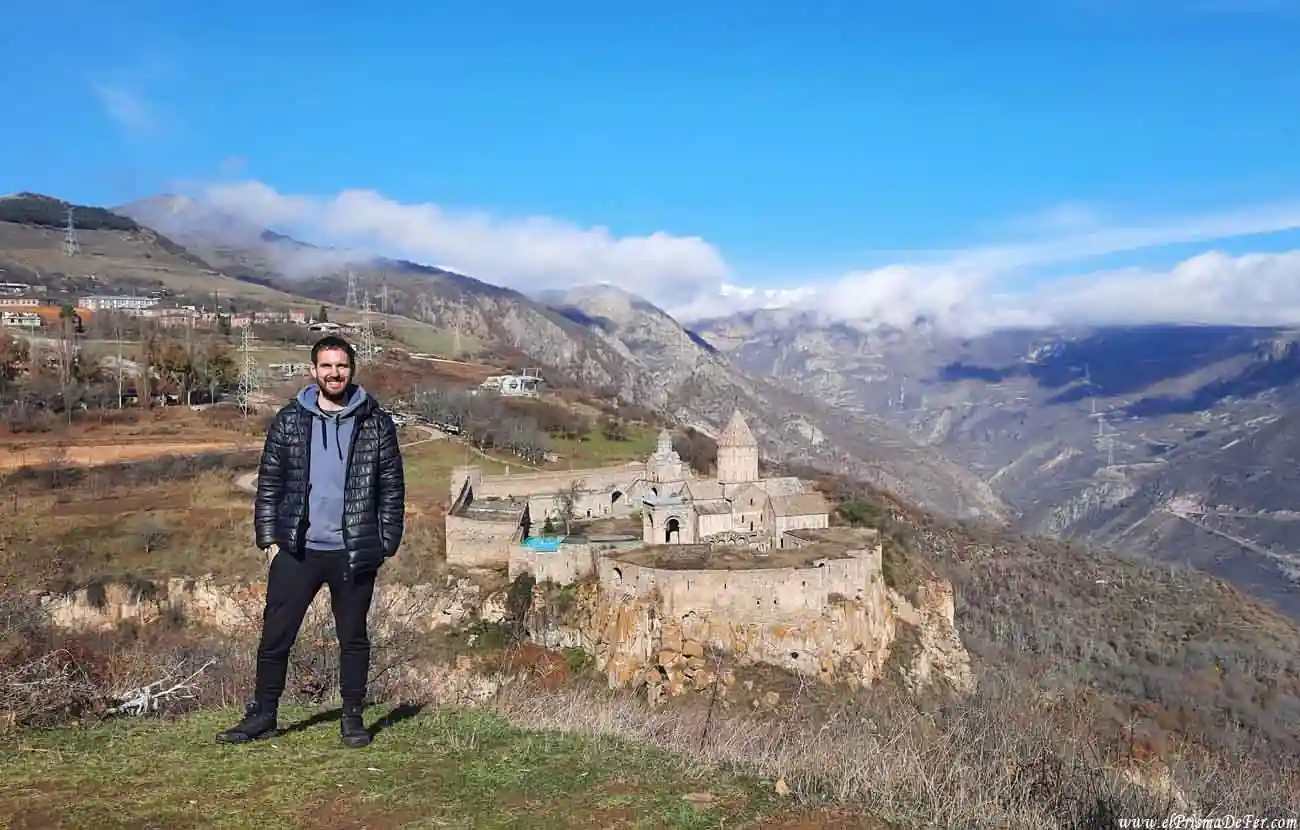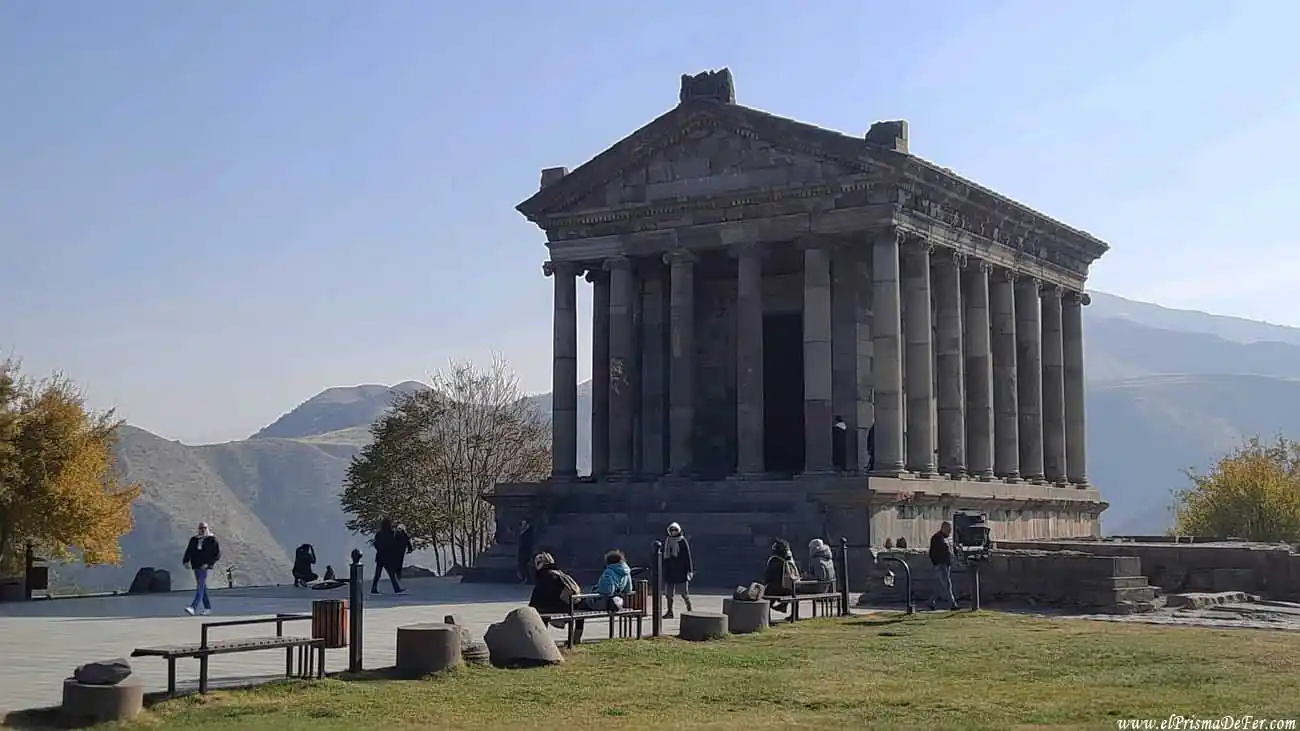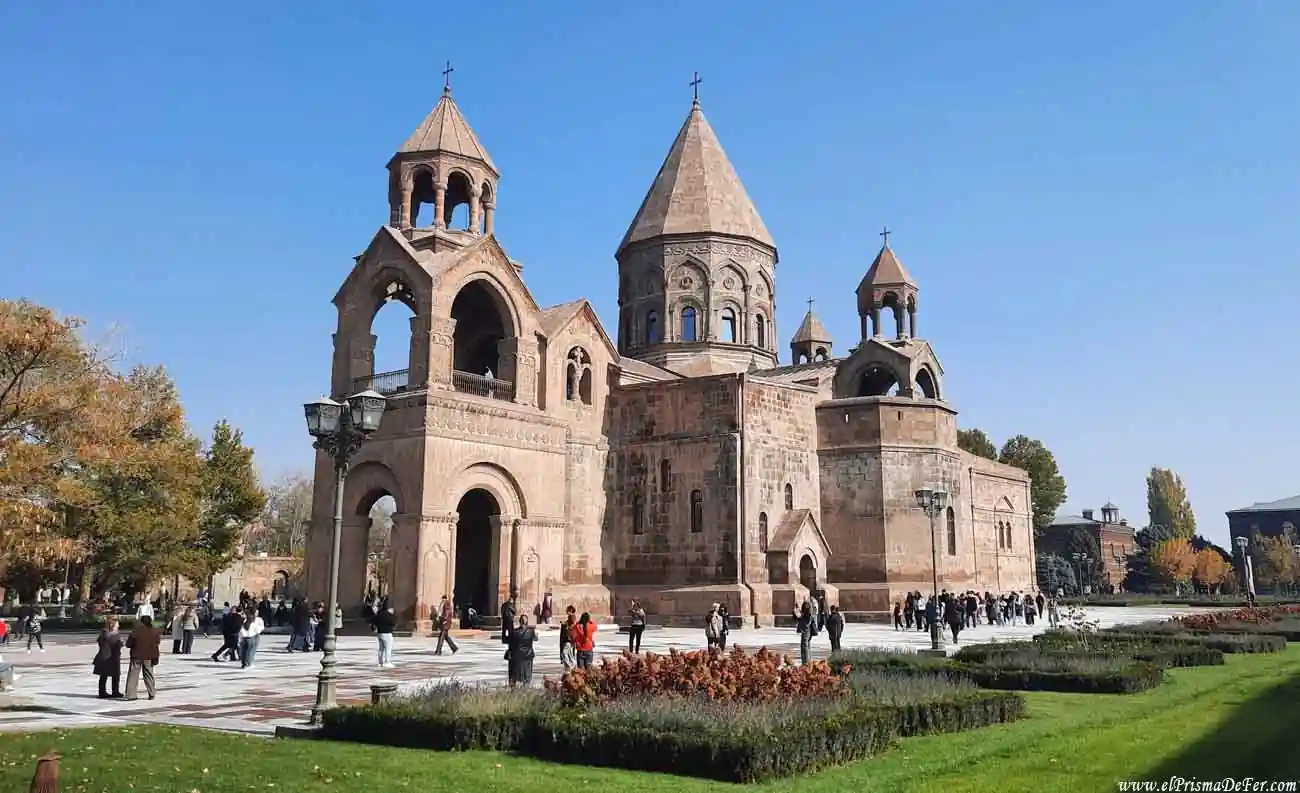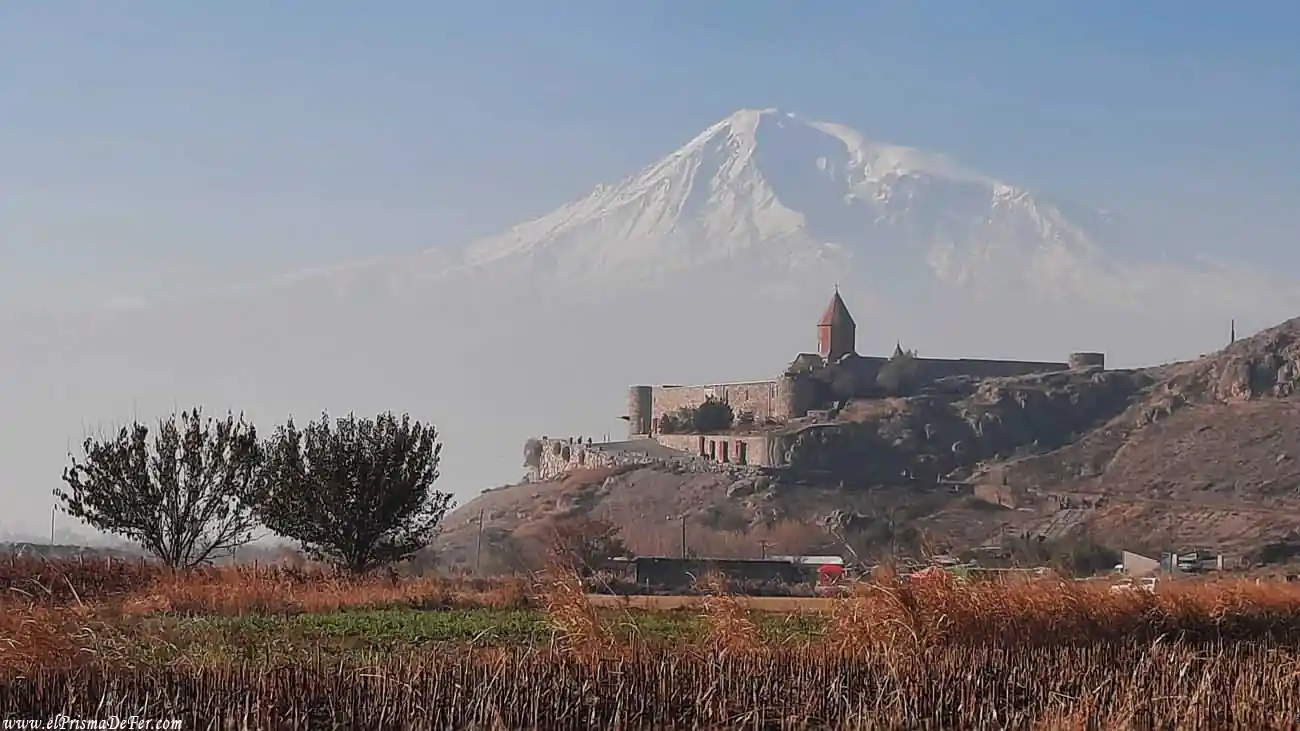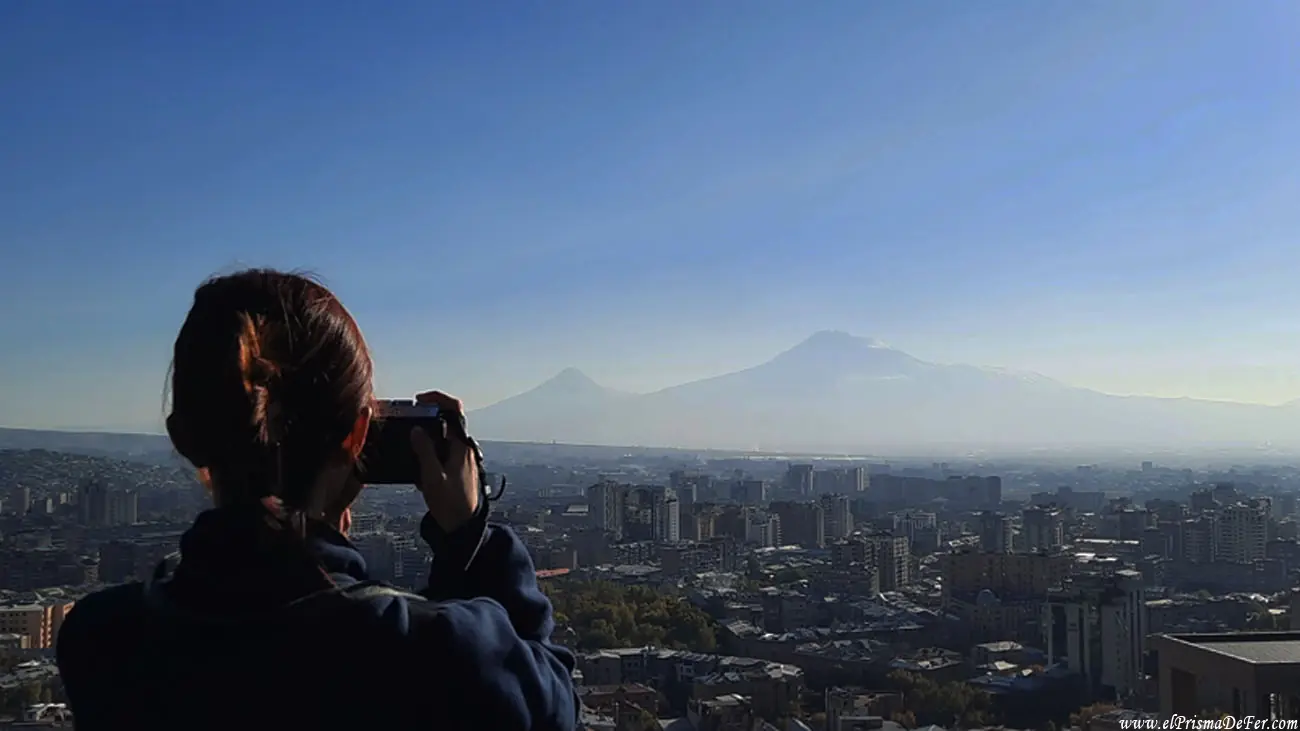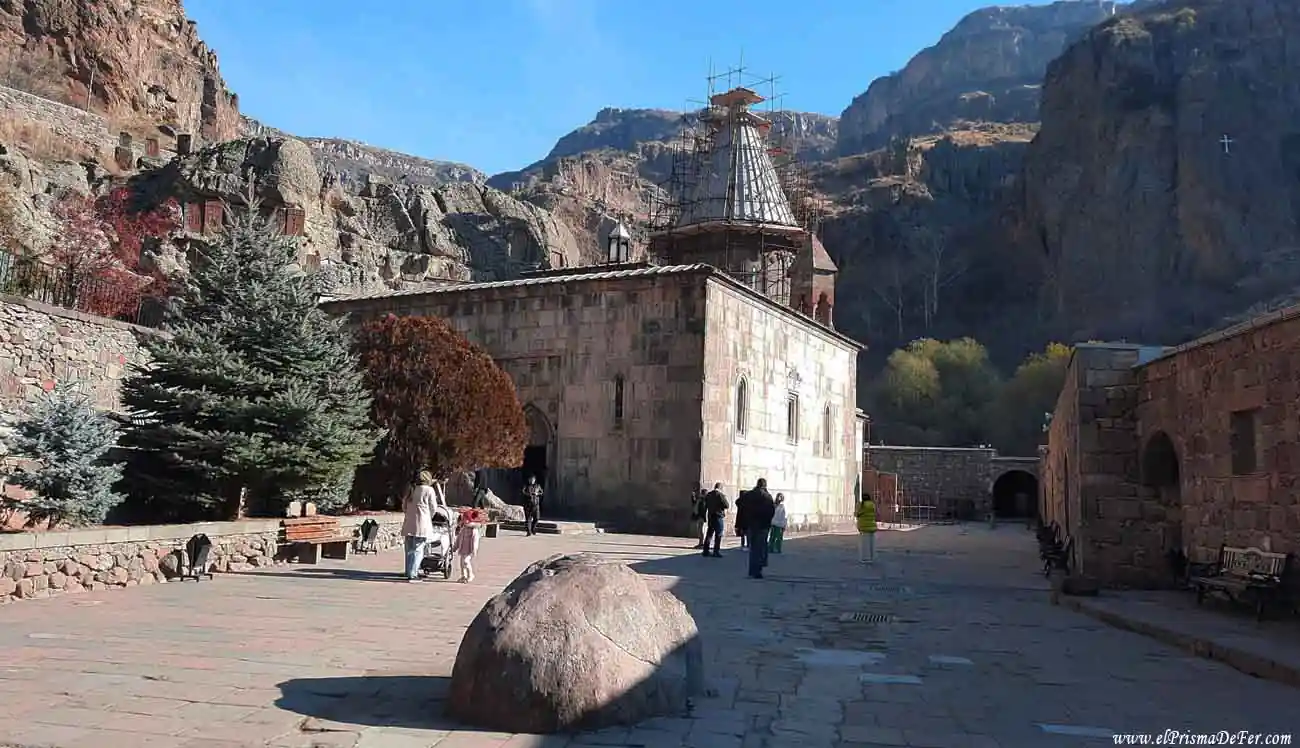Armenia is a small country in size, but vast in history and culture. Located in the South Caucasus, among mountains and landscapes that look like something out of a postcard, this destination surprised me with the hospitality of its people, more than its neighboring countries, and a heritage that blends the ancient and the modern.
Traveling through Armenia means discovering a less-explored country than others in the region, where an authentic atmosphere still permeates the air. Its capital, Yerevan, is a blend of history and contemporary life; while inland, valleys, mountains, and lakes showcase the country's natural richness.
Furthermore, Armenia was the first nation to adopt Christianity as its official religion and boasts monasteries and churches that are true architectural gems. It's a destination with much to offer and worthy of being on any curious traveler's bucket list.
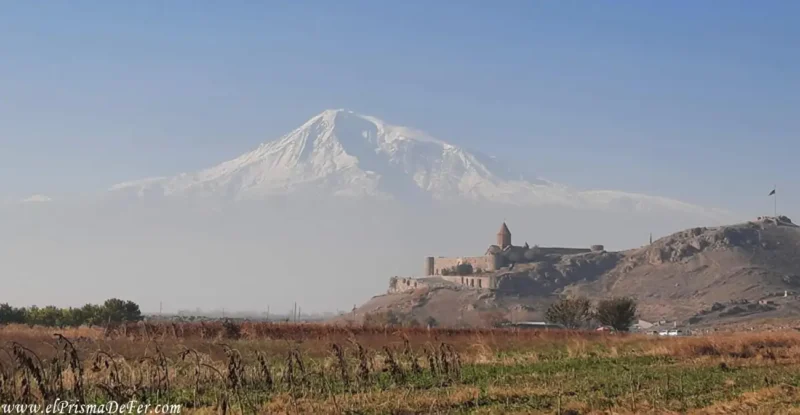

Table of Contents
What to know before traveling to Armenia
| Language 🗣️ |
| The official language is Armenian, although in tourist cities you can often find people who speak English or Russian. |
| Currency 💵 |
| The official currency is the Armenian dram (AMD). While card use is quite common in large cities like Yerevan, cash is still the predominant currency in smaller towns and public transportation. |
| Religion |
| The majority religion is Apostolic Christianity, closely linked to national identity. |
Location  |
| Armenia is located in the South Caucasus region, between Europe and Asia, bordering Georgia, Iran, Türkiye and Azerbaijan. |
| Capital 🏙️ |
| Its capital is Yerevan, one of the oldest continuously inhabited cities in the world. |
| Visa 🛂 |
| Regarding entry into the country, travelers of many nationalities do not need a visa for short stays, and those who do can easily apply online through the e-visa. |

My trip to Armenia was part of a long journey along the ancient Silk Road. In this post, you can learn more about the countries I visited and how to do it all on your own.
History of Armenia
Armenia is one of the oldest countries in the world, with a history dating back thousands of years. In ancient times, it was part of the Kingdom of Urartu and later consolidated as the Kingdom of Armenia, which became an important regional power.
Adoption of Christianity as the official religion
One of the most relevant milestones is that in the year 301 AD Armenia became the first country to adopt Christianity as its official religion, something that profoundly marked its cultural and spiritual identity.
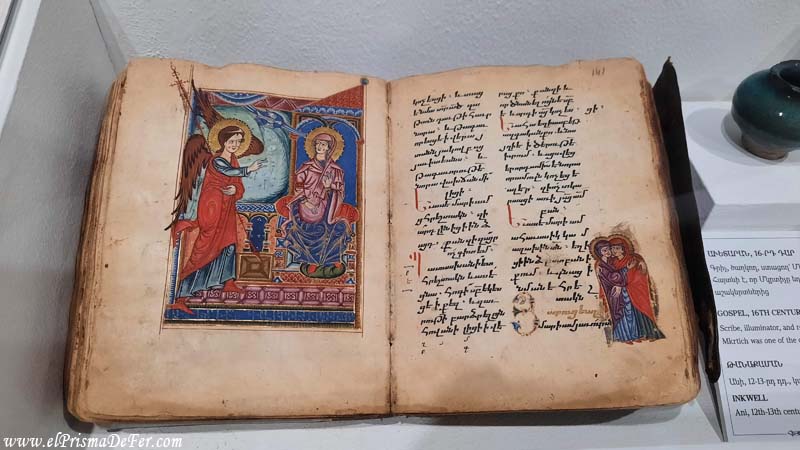
Over the centuries, Armenian territory has been the scene of conquests and disputes between empires such as the Roman, Persian, Byzantine, and Ottoman. This strategic location in the Caucasus meant that Armenia suffered constant invasions and divisions, but also developed a very strong identity to resist and keep its traditions alive.
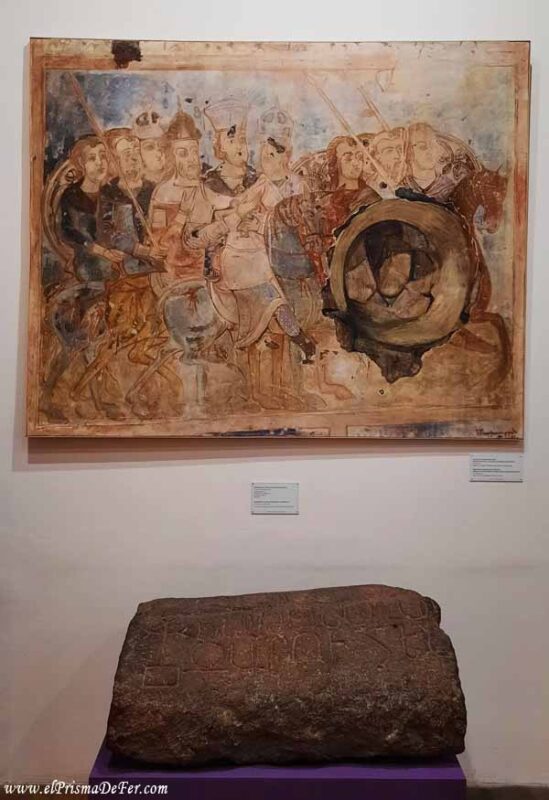
Armenian Genocide
One of the most tragic episodes in its modern history was the Armenian Genocide of 1915, when more than a million Armenians were murdered and displaced under the Ottoman Empire. This event left an open wound that is still part of the collective memory of the country and its diaspora around the world.
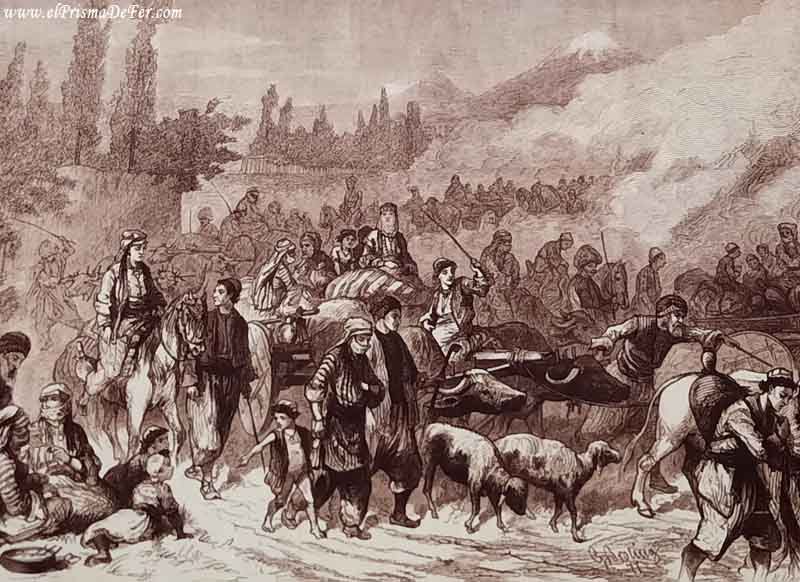
Independence
Following the fall of the Soviet Union, Armenia declared its independence in 1991, beginning a new era as a sovereign republic.
Hoy, el país combina su rico legado histórico con el desafío de desarrollarse en medio de un entorno geopolítico complejo, pero siempre con orgullo por sus raíces y tradiciones.

The Armenian Genocide: History and Context
The Armenian Genocide occurred between 1915 and 1923 during the collapse of the Ottoman Empire, and is considered one of the first genocides of the 20th century.
The causes are complex and intertwined with political, religious and ethnic factors. The Armenian population, predominantly Christian, had lived for centuries under Ottoman rule, a declining Muslim empire facing internal problems and external threats.


With the rise to power of the Young Turks and the outbreak of the First World War, the Ottoman government perceived the Armenians as a potential fifth column allied with Russia, the empire's enemy at the time. This added to economic and social tensions, as the Armenians were seen as a prosperous and relatively autonomous group, which caused suspicion in some sectors of the empire.
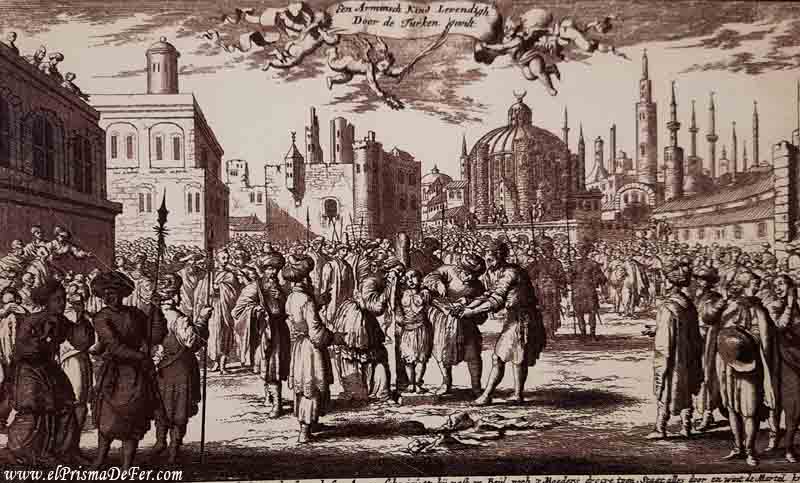
As a result, the authorities implemented systematic campaigns of deportation, forced labor, and mass murder, resulting in the deaths of more than 1.5 million Armenians. Families were uprooted from their ancestral homes, entire villages were destroyed, and many survivors were forced into exile, marking the dispersal of the Armenian diaspora.
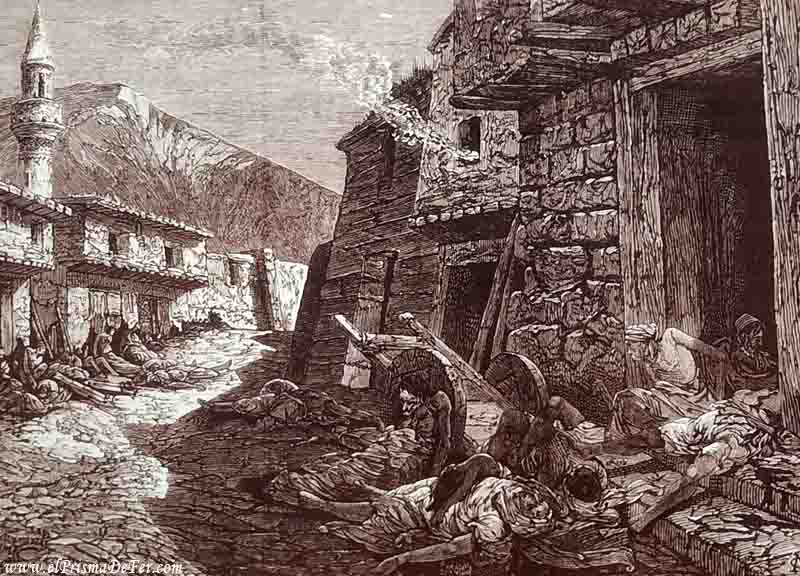
This event profoundly marked the Armenian nation, leaving scars on the country's identity and collective memory.
Today, in Armenia and the Armenian diaspora, April 24 is observed each year as a day of commemoration and reflection. In Yerevan, there are monuments and museums dedicated to the memory of the victims, which help us understand the magnitude of this tragedy and its impact on the history of the Armenian people.
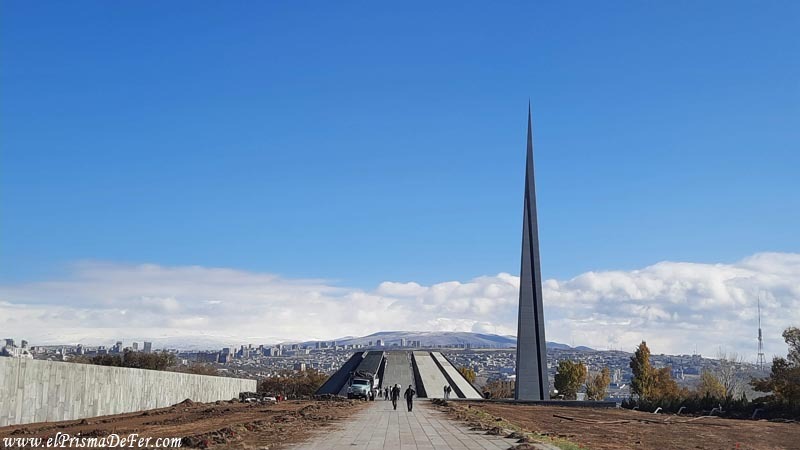
For those who want to understand this tragedy in a more visual way, I recommend watching the movie “The Promise”. Based on historical facts, this production shows the events of 1915, following characters who closely experience the tragedy and human dilemmas in the midst of the persecution.

Christianity in Armenia
Armenia is recognized for being the first country in the world to adopt Christianity as its official religion, back in 301 AD during the reign of Tiridates III. Since then, the Armenian Apostolic Church has played a pivotal role in national identity, resisting invasions, wars, and periods of foreign domination.
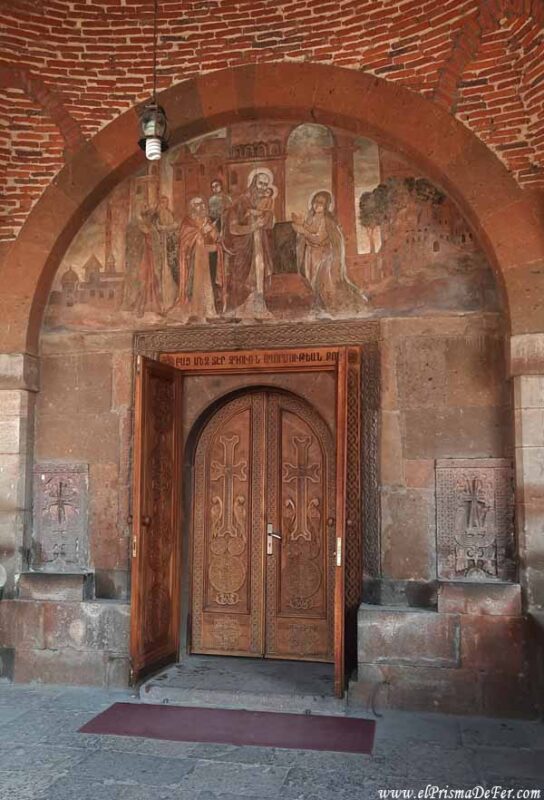
The Christian faith is so deeply rooted that even outside their borders, Armenians have maintained active religious communities.
An example is the Armenian Quarter in Jerusalem, where for centuries there has been a strong presence of monks and faithful who guard their own churches and traditions.
In the country, medieval monasteries and temples, such as Geghard, Tatev or Noravank, are not only places of worship, but also symbols of the Armenian soul. For travelers, visiting these places means understanding the inseparable relationship between religion, culture, and history in Armenia.

Is Armenia in Europe or Asia?
Armenia's location is often confusing, as it is located in the South Caucasus, a region that serves as a bridge between Europe and Asia. Geographically, most experts place it in Western Asia, but culturally and historically Armenia has strong ties to Europe, both due to its Christian religion and its political closeness to European institutions.
In practice, Armenia does not fully identify with either continent: it is located in an intermediate point that combines Eastern and Western traditions. Because of this, many travelers consider it a destination with the best of both worlds, which makes it even more interesting to explore.
How to get around Armenia
Armenia is a small country, but with roads that crisscross mountains and valleys, so planning your journeys well is key to making the most of your trip. These are the main options for getting around:
- Marshrutkas (minibuses): These are the most economical local option for traveling between cities and towns. They operate as intercity public transport and tend to depart when they are full, so punctuality may vary.
- Car Rental: The most flexible way to explore Armenia. It allows you to reach monasteries, lakes, and rural villages at your own pace. Keep in mind that some mountain roads can be narrow and winding, so it's advisable to drive carefully.
- Taxis and rideshare services: In Yerevan and other large cities, taxis are relatively cheap. Apps like Yandex work well and avoid misunderstandings about fares.
- Organized Tours: For those looking for convenience, there are day tours or multi-day excursions that include transportation, a guide, and entrance fees to major tourist sites, such as Geghard Monastery or Lake Sevan.
Some curiosities of Armenia
Armenia is a country full of stories and unique features that surprise travelers. Here are some interesting facts that will help you see it through a different lens:
The Armenian alphabet is unique
It was created in 405 AD by the monk and linguist Mesrop Mashtots with the aim of translating the Bible into Armenian and strengthening cultural identity against foreign influences. It consists of 39 letters and is unlike any other alphabet in the world. Its importance is so great that in the town of Oshakan there is the tomb of Mashtots and a monument with enormous stone letters, almost a place of pilgrimage for Armenians.

First Christian country in the world
In the year 301 AD, King Tiridates III adopted Christianity as the official religion, thanks to the evangelizing work of Saint Gregory the Illuminator. This occurred several decades before the Roman Empire did the same.
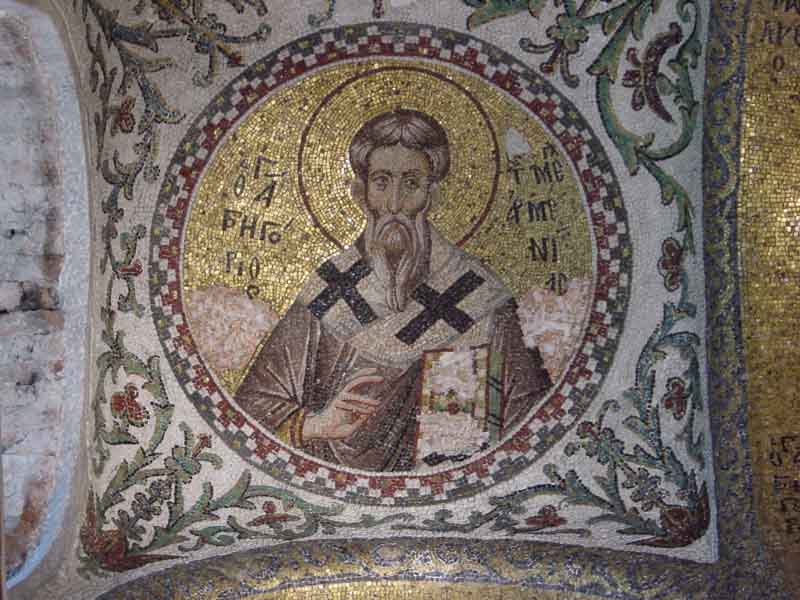
Since then, the Christian faith has become a pillar of Armenian identity, visible in the large number of medieval churches and monasteries that remain, many of which have been declared UNESCO World Heritage Sites.
Mount Ararat
Although it is currently located within Türkiye, it is the Armenian national symbol and appears on the country's official coat of arms. According to biblical tradition, Noah's Ark rested there after the Great Flood.
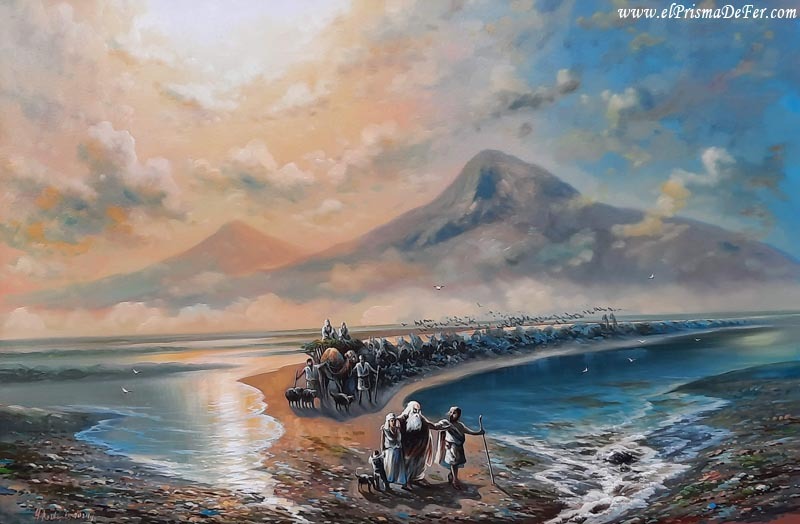
For Armenians, Ararat is much more than a mountain: it represents historical memory, spiritual origins, and a connection to their roots, even beyond their current borders.
Armenian brandy
It's famous all over the world. Even Winston Churchill considered it one of his favorites.
Duduk, the national instrument
Made of apricot wood, its melancholic sound is recognized by UNESCO as Intangible Cultural Heritage of Humanity.

The flag of Armenia
It is composed of three horizontal stripes: red, blue, and orange. The red symbolizes the blood shed in the defense of the country and freedom, the blue represents the sky and the hope of the Armenian people, and the orange reflects the creativity and industriousness of its people.
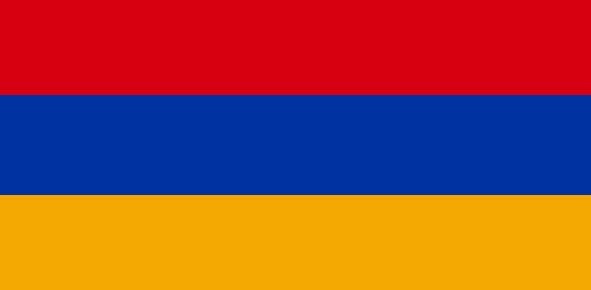

Map with the travel itinerary in Armenia
What to do in Armenia
Explore Yerevan, the capital
Yerevan is the starting point for almost every trip to Armenia and a city that surprises. With over 2,800 years of history, it combines remnants of the Soviet era with a modern, youthful energy.
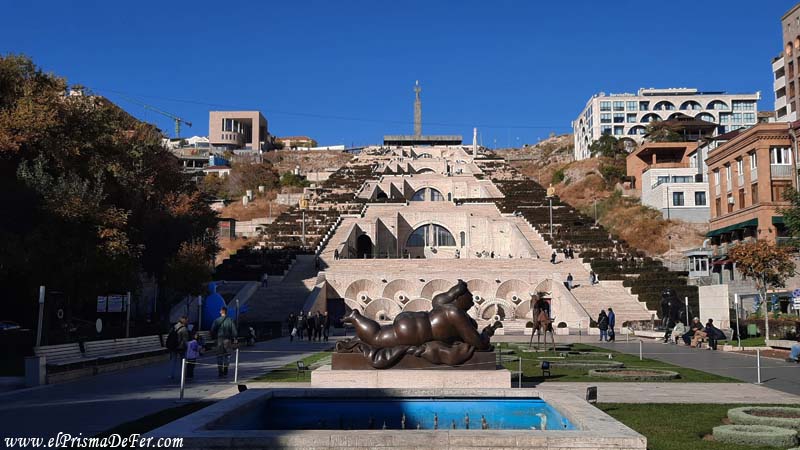
The center is easily explored on foot: the Republic Square with its imposing architecture, the Cascade, a complex of steps offering panoramic views and a contemporary art space, and the Vernissage Market, where you can find crafts, souvenirs and antiques. It is also essential to visit the Armenian Genocide Museum, a moving place that helps you understand an essential part of the country's history.
The city is full of cafes, restaurants, and bars, making it a great place to try the local cuisine and experience everyday Armenian life. At night, Yerevan takes on a different vibe: brightly lit streets, crowded terraces, and a safe, lively atmosphere.
Khor Virap and the views of Ararat
An hour from Yerevan is the Khor Virap Monastery, one of the most iconic places in Armenia. Its importance is not only religious, as Saint Gregory the Illuminator was imprisoned there for thirteen years, but also visual: from its walls you have the most iconic postcard of Mount Ararat. On clear days, the contrast between the monastery and the snow-capped mountain is simply unforgettable.
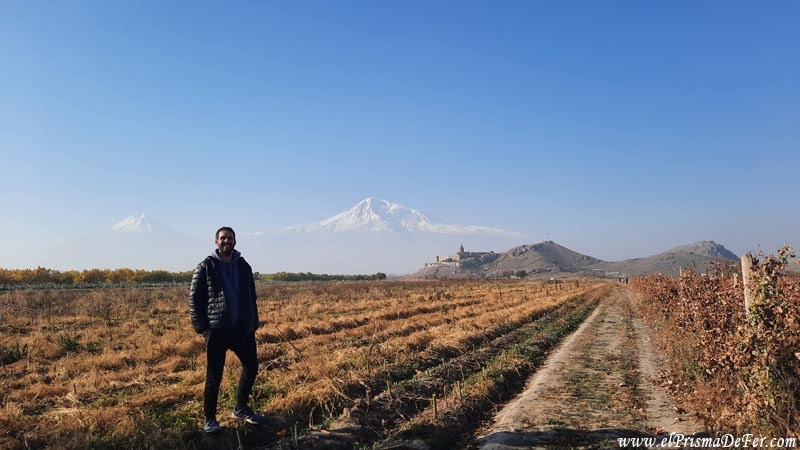
Khor Virap is also a site steeped in symbolism, as it's very close to the Turkish border. It's a good destination for a half-day trip from the capital.
Geghard and the Temple of Garni
Another essential tour from Yerevan combines two gems: the Geghard Monastery and the Garni Temple. A UNESCO World Heritage Site, Geghard is partially carved into the rock and surrounded by mountains, making it an almost mystical place.
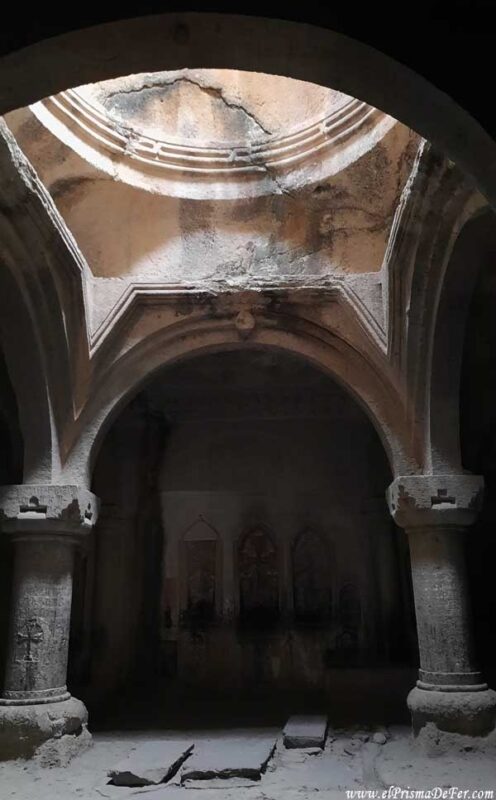
It was founded in the 4th century and for centuries housed sacred relics, including the spear that supposedly wounded Christ on the cross.
The Garni Temple, the only pagan temple that survived the Christianization of the country, is another of the great attractions. Its Greco-Roman style surprises travelers, as it contrasts with the predominant Christian architecture in Armenia.
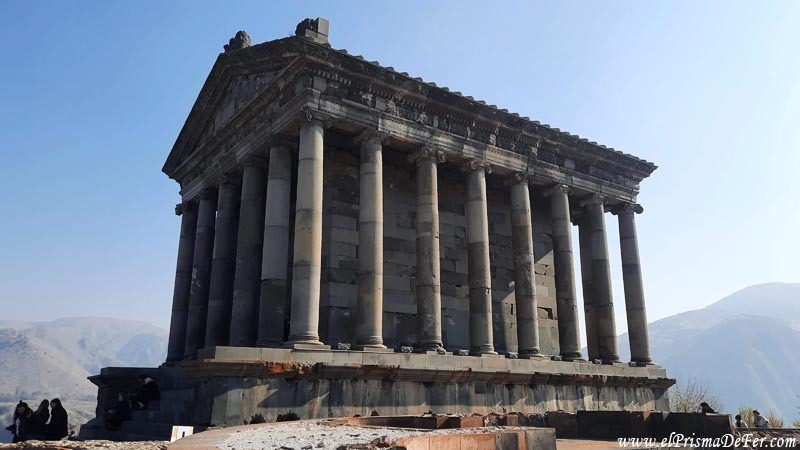
Both places are usually visited on the same day and offer a journey back in time between the pagan and the Christian.
The Cathedral of Echmiadzin
Known as the “Armenian Vatican,” the Echmiadzin Cathedral is the seat of the Armenian Apostolic Church and one of the oldest Christian temples in the world, built in the 4th century.
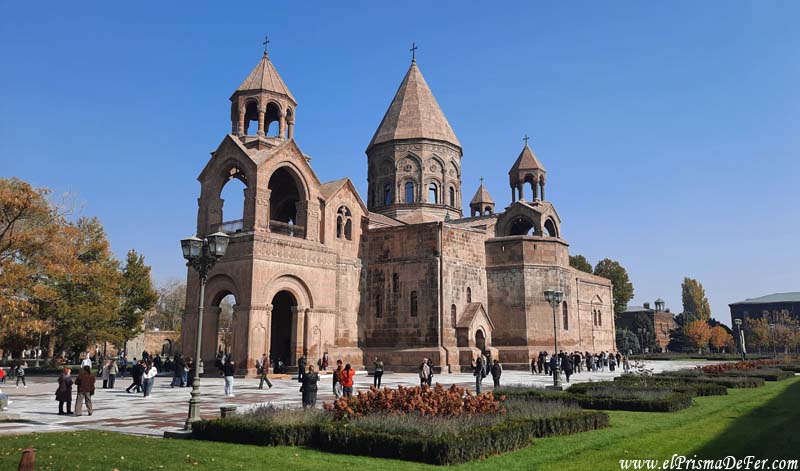
The complex includes churches, museums, and relics that provide insight into the country's strong religious tradition. For those interested in spirituality, it is one of Armenia's most significant sites.
It is only 20 km from Yerevan, so it can be easily visited on a short trip.
Noravank, monastery between canyons
The Noravank Monastery is famous for its location: nestled in a narrow, red-walled canyon, it offers one of the most spectacular views of Armenia.
It was an important religious and cultural center in the 12th and 13th centuries, and its main church, dedicated to St. John, is an excellent example of medieval Armenian architecture.
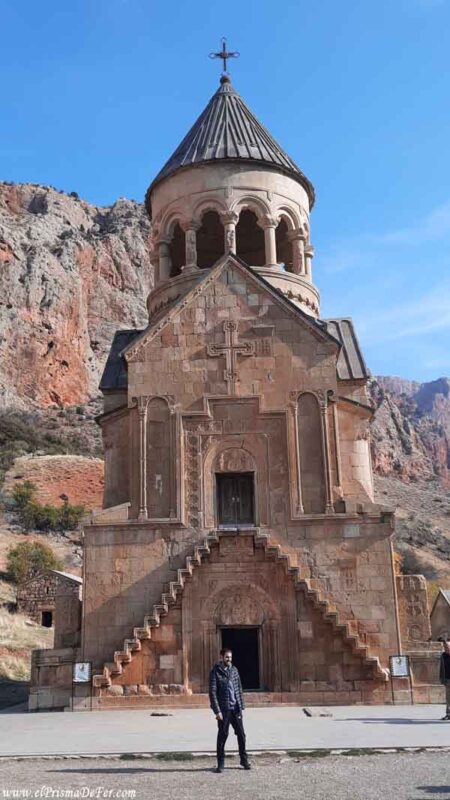
The journey to Noravank is part of the experience, as it passes through mountainous landscapes that prepare the traveler for the majesty of the place.
Goris and Tatev Monastery
In the south of the country, Goris is a quiet town surrounded by hills and rock formations. It is the ideal base for visiting the Tatev Monastery, one of the most impressive in Armenia.
This monastery, literally hanging over a cliff, can be reached by road or via the Wings of Tatev, the longest cable car in the world, which offers views throughout its 5.7 km journey.
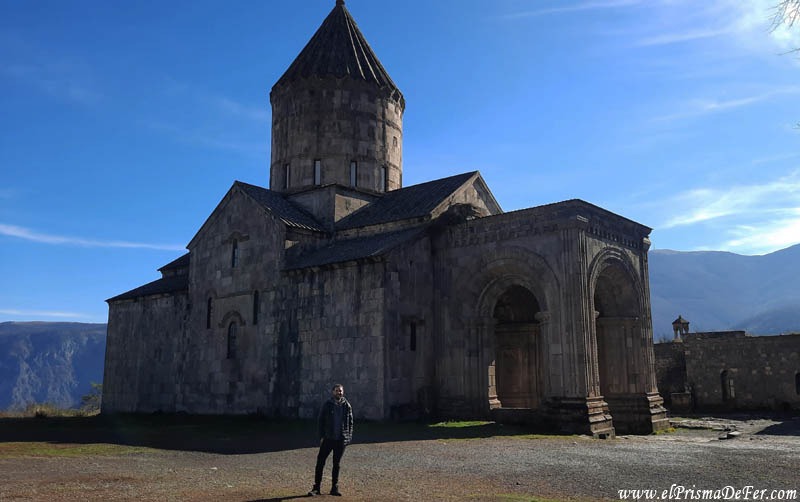
Tatev was an important spiritual and educational center in the Middle Ages, and even today it continues to convey the grandeur of that era. The combination of nature, history, and architecture makes it a must-see.
Northern Armenia: Haghpat and Sanahin
In the northern region, near the border with Georgia, are two of the country's most important monastic complexes: Haghpat and Sanahin, both declared World Heritage Sites. These medieval gems, surrounded by verdant mountains, were centers of learning and culture in the 10th and 13th centuries.
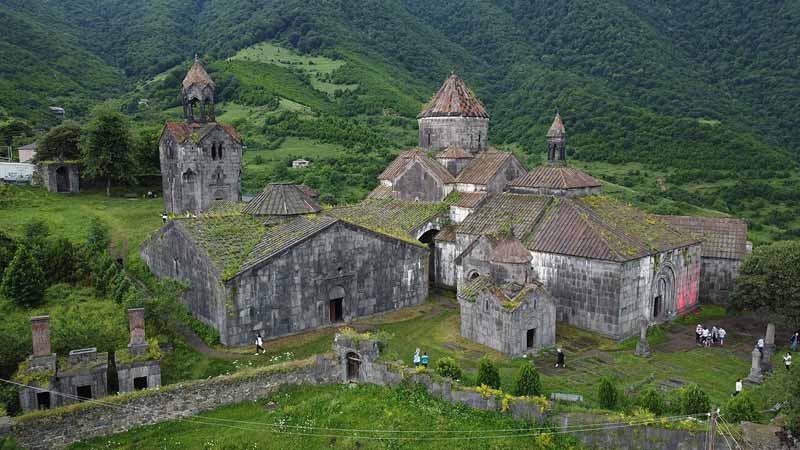
In addition to the monasteries, northern Armenia offers lusher landscapes, canyons, and picturesque villages that contrast with the aridity of the south. For those traveling overland to Georgia, this area is an ideal stopover and discover another side of the country.
Organized activities in Armenia

Border crossings in Armenia
The country shares borders with Georgia, Iran, Türkiye and Azerbaijan, but not all of them are open to the transit of people:
Border with Georgia 🇬🇪
It's the most popular route for travelers. Marshmallows and buses depart from Yerevan to Tbilisi, and you can also cross by private car. It's a safe and convenient way to combine a trip through the Caucasus.
Border with Iran 🇮🇷
It's also open and allows access to Tabriz or Tehran. It's not the most common route for tourists, but it's popular with locals and merchants. If you plan to cross, it's a good idea to research Iranian visa requirements.
Border with Türkiye 🇹🇷
Despite its proximity and the fact that Mount Ararat can be seen from Khor Virap, the land border with Turkey has been closed since 1993 due to political conflicts. There are no crossings, so travel between the two countries requires air travel or travel through Georgia.
Border with Azerbaijan 🇦🇿
No crossing is possible, as both countries are engaged in an ongoing conflict over the Nagorno-Karabakh region. Attempting to approach the border zone is not advisable and could be dangerous.
I wrote a separate post summarizing all the possible border crossings between the Caucasus countries, detailing which ones are open for free and safe movement.
The conflict between Armenia and Azerbaijan
The relationship between Armenia and Azerbaijan has been marked for decades by a territorial and ethnic conflict surrounding Nagorno-Karabaj, a mountainous region inhabited mostly by Armenians but internationally recognized as part of Azerbaijan.
Following the dissolution of the Soviet Union, the region became the epicenter of open warfare in the early 1990s, leaving tens of thousands dead and hundreds of thousands displaced.
Although a ceasefire was signed in 1994, tensions never disappeared. Sporadic clashes erupted over the years, culminating in a renewed war in 2020, in which Azerbaijan regained much of the territory lost in the 1990s. More recently, in 2023, a new all-out attack by Azerbaijan forced the Armenians of Nagorno-Karabakh to flee the region en masse, marking a turning point in the situation.
Typical food of Armenia
Armenian cuisine is one of the best ways to experience its culture. It's characterized by the use of fresh herbs, traditional breads, and dishes that combine simplicity with flavor. Here are some must-try dishes on a trip through the country:
Lavash 🫓
Traditional Armenian bread, declared Intangible Cultural Heritage by UNESCO. It is a thin and soft tortilla that is baked in clay ovens called tonir. It is served at almost every meal and is often used as a base for wrapping meats, cheeses, or vegetables.

Khorovats 🍢
The Armenian version of barbecue. These are skewers of meat (usually pork or lamb) marinated with spices and grilled. It's one of the most popular dishes at family gatherings and holidays.
Dolma 🍃
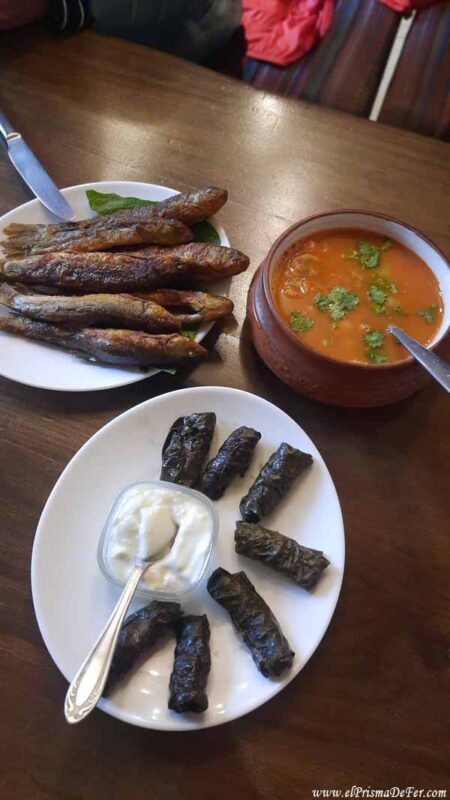
Vine leaves stuffed with rice, spices, and sometimes meat. Variations also exist with vegetables such as peppers or eggplant. It's a dish shared with other Caucasian and Middle Eastern cuisines, but in Armenia it has a very unique flavor.
Harissa 🥘
A traditional stew made with wheat and chicken. It's considered one of the country's oldest dishes, prepared primarily for religious celebrations and special occasions.
Baklava and sweets with nuts 🍯
Desserts are usually very sweet, with honey, nuts, and puff pastry as the main ingredients. Gata, a pastry filled with sugar and nuts, is also a classic accompaniment to Armenian tea or coffee.
Security in Armenia
Armenia is a very safe country to travel to . Crime rates are low, and it's common to walk around cities like Yerevan at night without feeling at risk.
As in any destination, it's advisable to be vigilant with your personal belongings in tourist areas and markets, but theft is rare.
In border areas with Azerbaijan, it is advisable to avoid approaching, as military tensions may arise.
Is it expensive to travel around Armenia?
Compared to Europe or even Georgia, Armenia is quite cheap. Prices for accommodation, food, and transportation are affordable:
- A meal at a local restaurant costs between 5 and 10 USD.
- A hostel or guesthouse costs between 10 and 20 USD per night.
- Public transport and intercity marshrutkas are very cheap.
- What can be more expensive are private tours or taxi transfers to remote destinations.
It's a country that's well-suited to backpacker budgets, but also offers more comfortable options for those looking for boutique hotels or organized tours.
SIM Card in Armenia
Getting a SIM card is easy and cheap. The main operators are Viva-MTS, Ucom and Beeline, with good coverage in almost the entire country.
At Yerevan Airport and in the city center, you can buy a chip with data plans from $3 to $10, depending on the gigabytes.
Internet speed is generally good in cities and large towns, although it can be slow in mountainous areas.
Which eSIM to use in Armenia
If you don't want to go through the hassle of finding a traditional SIM card as soon as you arrive in Armenia, an excellent alternative is to use an eSIM. With this system, you can activate mobile data from your phone before traveling, without having to go to a store or change your physical card.
For those planning to travel around the country, I recommend using Airalo, as it offers cheaper plans than other companies and has coverage throughout Armenia, even in less touristy areas.
Additionally, if you buy the Armenia eSIM through my link you can access a 15% discount if it's your first purchase (Code: NEWTOAIRALO15), or 10% if you've used the platform before (Code: AIRALOESIM10).
If you want to better understand how eSIMs work, their advantages, how to check if your phone is compatible and how to use the codes, I invite you to read the full post I wrote on the topic.
How many days to stay in Armenia?
The ideal duration depends on the type of trip:
- 3 to 4 days: to visit Yerevan and take a couple of nearby excursions (Khor Virap, Garni, Geghard).
- 1 week: enough to also visit Noravank, Tatev and part of the north with Haghpat and Sanahin.
- 10 days or more: Allows for a complete trip, including Goris, the south of the country, and less touristy towns.
In general, a minimum 10-day trip is recommended to enjoy Armenia calmly, combining history, nature, and culture.
Best time to travel to Armenia
Armenia's climate is continental, with cold winters and hot summers. The best time to visit is in spring (April-June) and autumn (September-October), when temperatures are pleasant and the landscapes appear greener or more vibrant.
Summer(July-August) can be very hot in the Ararat Valley, although it is ideal for those who enjoy dry heat and outdoor parties.
Winteris attractive for snow seekers, as Armenia has ski resorts, but it is not the best season for visiting monasteries or taking long hikes.
I was in Armenia in November and it was already quite cold, with low temperatures that required dressing warmly to walk around the cities or go on excursions. Several days saw cloudy skies and even some rain, especially in the south.
Support The Prism of Fer!
Your support helps me continue creating free content on the blog. Thank you so much!


